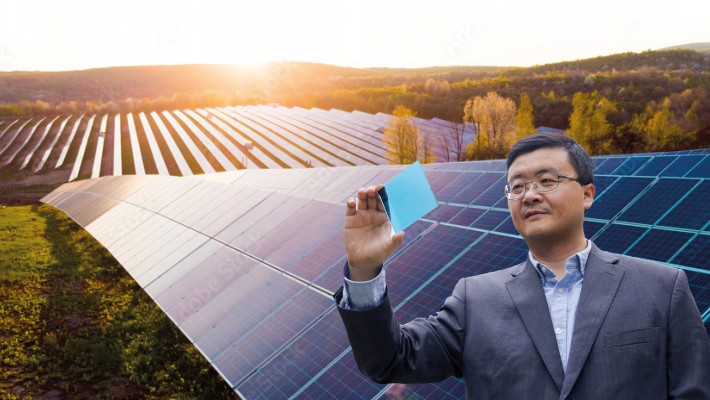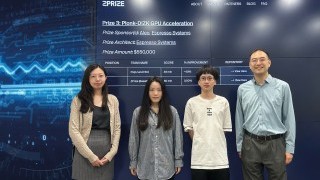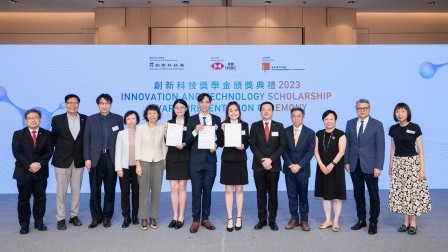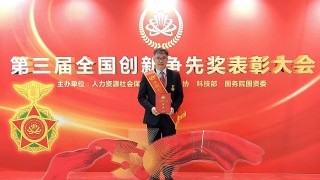A record 19.31% power-conversion efficiency for organic solar cells
Other Articles
In light of the impact of energy consumption on the planet, generating electricity from solar energy has become essential for achieving a sustainable environment.
A PolyU research team led by Professor Li Gang, Sir Sze-yuen Chung Professor in Renewable Energy and Chair Professor of Energy Conversion Technology, Department of Electrical and Electronic Engineering, has discovered ways to achieve a 19.31% power-conversion efficiency (PCE), the highest for binary organic solar cells (OSCs). That is through the invention of a novel morphology-regulating technique by using 1,3,5-trichlorobenzene as a crystallisation regulator for OSCs.
Improved OSC efficiency helps accelerate future applications
The remarkable breakthrough in OSC efficiency will help enhance future applications of advanced solar energy devices. While most solar cells use silicon to absorb sunlight and generate electricity, OSCs use carbon-based minerals for the same process, but with limited efficiency.
“The new finding will likely create tremendous opportunities in applications like portable electronics and building-integrated photovoltaics,” said Professor Li. New doors will be opened when lowcost single-junction OSCs achieve a PCE of over 20%, together with more stable performance and other unique advantages such as flexibility, transparency, stretchability, low weight and tuneable colour.
Professor Li added, “This is a very encouraging result for the long-standing research on OSCs that I have conducted over the past two decades. We have already achieved better OSC efficiency and this will subsequently help accelerate the applications of solar energy.”
It took the research team about two years to develop a non-monotonic intermediated state manipulation (ISM) strategy to manipulate the bulk-heterojunction (BHJ) OSC morphology and simultaneously optimise the crystallisation dynamics and energy loss of nonfullerene OSCs. Unlike the traditional approach of using solvent additives, which is based on excessive molecular aggregation in films, the ISM strategy promotes the formation of more ordered molecular stacking and favourable molecular aggregation. As a result, the PCE was considerably increased, while the undesirable non-radiative recombination loss was reduced. Notably, non-radiative recombination lowers the light generation efficiency and increases the heat loss. The research team’s findings have been published in Nature Communications. Read more






